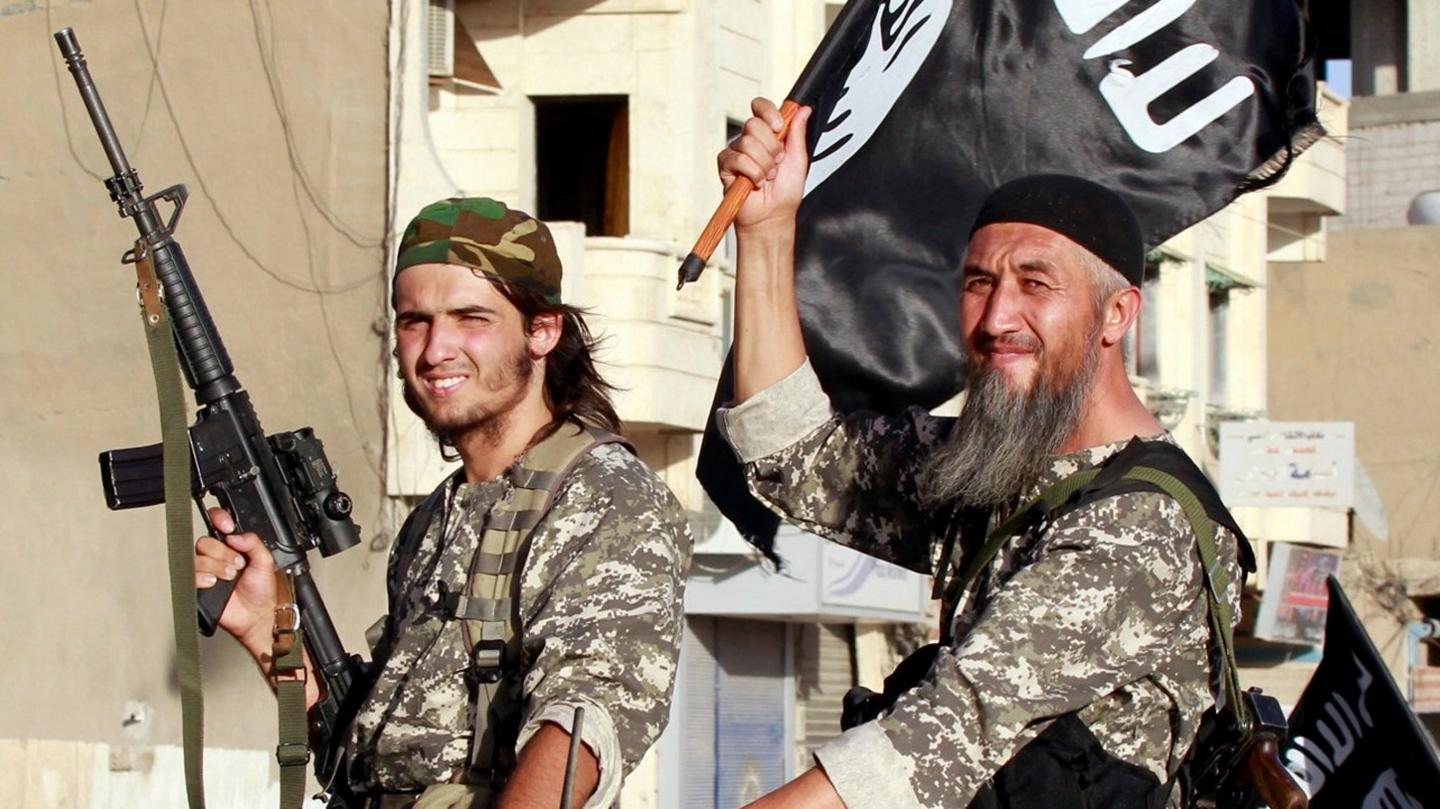Iraq and Syria: Who are the foreign fighters?
- Published

Despite the focus on Western jihadis, most foreign militants in Syria are Arabs
International attention given to foreign fighters within the ranks of Islamic State (IS) is largely focused on militants from Europe and the United States.
These Western fighters have had a high media profile, especially since the beheading of two US journalists by a suspected British jihadist.
Yet recent studies show that most foreign militants in Syria and Iraq are Arabs.
The New York-based Soufan Group and the London-based International Centre for the Study of Radicalization suggest that the total number of foreign fighters in Syria at present is between 11,000 and 12,000, with only about 3,000 of them from the West.

Note: figures do not take into account for those who may have left the region or died during fighting
Of the remainder, Tunisians make up the largest group (estimated at about 3,000), followed by those from Saudi Arabia (about 2,500) and Morocco (1,500).
Tunisia 'incubator'
Arab media stress that the true figures could be much higher than these estimates.
Tunisian media sources, quoting a PEW/CNN report, point to the fact that their country has become the main "incubator" of "terrorists" fighting in Syria.

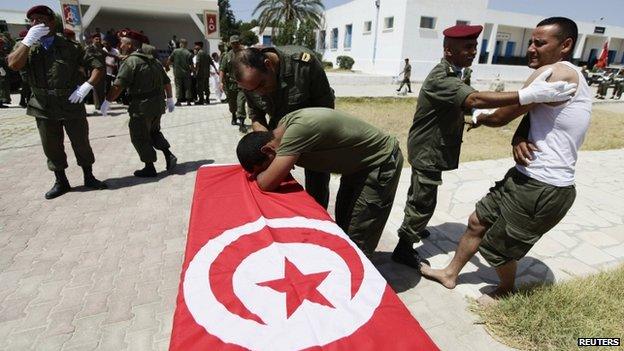
Several Tunisian soldiers have been killed by Islamist militants in recent months
Since the overthrow of Tunisian President Ben Ali in 2011, the country has seen a low-level insurgency involving Islamist militants. Several opposition politicians have been assassinated, and dozens of militants and soldiers have been killed.
Tunisia has also suffered from the chaos in neighbouring Libya and the presence of militants there.
Syrian report
According to a report attributed to the Syrian military, almost 54,000 foreign combatants from 87 different countries have come to the country since the start of the civil war. Thousands of them are said to have been killed.
The report, first published by Tunisian daily newspaper al-Chourouk, external and widely circulated in the Arabic media, says the study was compiled by an unnamed Syrian military research centre.
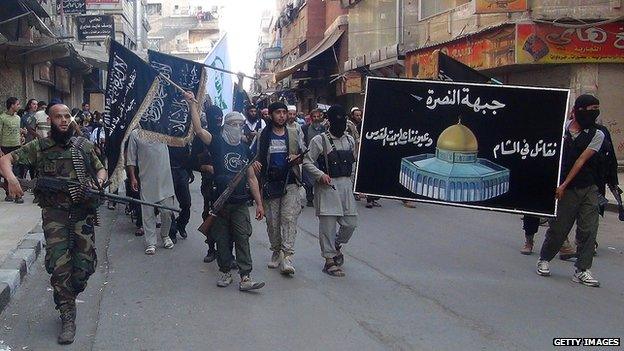
At this al-Nusra Front rally near Damascus a banner (R) reads: "We fight in Syria... and our eyes are on Jerusalem"
It says Chechens top the list of foreign fighters with 14,000 combatants, of which 3,691 have been killed. Besides Chechens, the largest groups of fighters are thought to be Saudis, Lebanese, Libyans, Iraqis and Tunisians.
Saudi fighters are estimated at 12,000, with 3,872 reported killed and 2,689 said to have disappeared, including seven women.
Out of 9,000 Lebanese involved with jihadis in Syria, about 2,904 have lost their lives, including four women.
According to Maghreb analysts quoted by al-Chourouk, Libyans and Tunisians are mainly fighting under the IS banner, while Algerians and Moroccans are with al-Nusra Front.
It is not known how many Chechens or Saudis are fighting alongside IS.
Room to radicalise
Like their Western counterparts, Arab jihadis appear to rely on both online and offline radicalisation and recruitment techniques.
In the immediate aftermath of the Arab Spring in 2011, the newly-found freedoms in countries such as Tunisia, Egypt and Libya allowed Islamists and jihadis alike to openly promote their ideologies.
This was done through handing out pamphlets, public talks and conferences as well, as via recorded videos and content shared online, radicalisation in mosques and schools, and mainstream media.
The Syrian conflict provided a narrative to help galvanise the recruitment process.
And when the Muslim Brotherhood was removed from power in Egypt, the space available for radical clerics tightened, leaving social media and personal networks to fill the gap.
BBC Monitoring reports and analyses news from TV, radio, web and print media around the world. For more reports from BBC Monitoring, click here. You can follow BBC Monitoring on Twitter , externaland Facebook, external
- Published3 September 2014
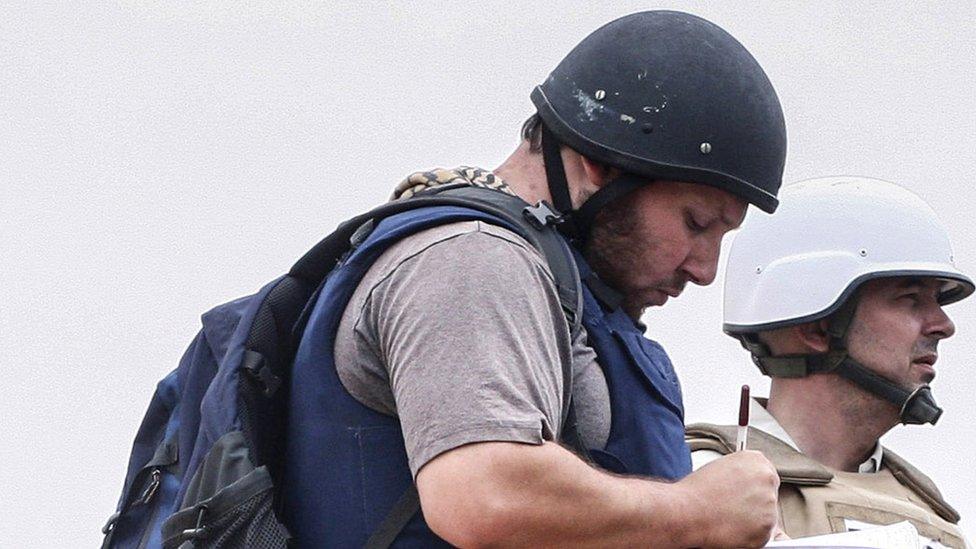
- Published2 September 2014
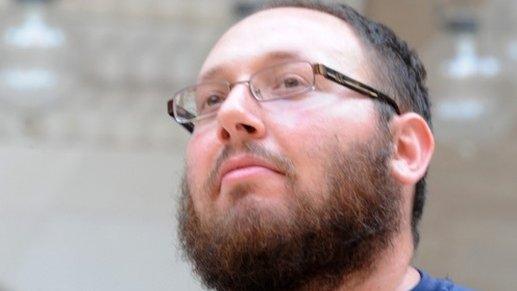
- Published1 September 2014
